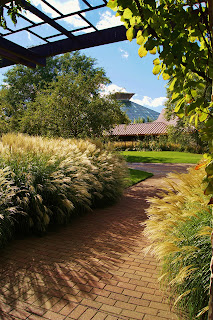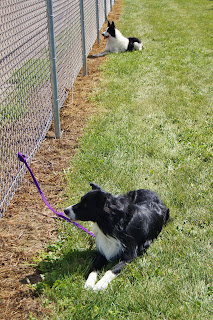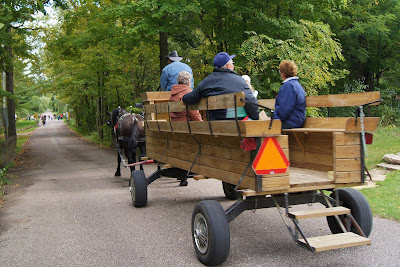 Answer: Hikers do it, bikers do it,
religious people do it, they do it for luck or to drive bad luck or
misfortune away, they do it for fun, they do it for relaxation, they do
it to learn about balance in architecture or about balance starting
within themselves, they learn it to lose weight, to get past a bad habit
like alcoholism, they do it just to mark the path or to leave their
mark, or just because someone else did, they do it to create an alter,
to mark a grave, to commemorate something to someone like celebrating a
wedding or a spiritual experience, they do it for exercise or for
learning patience....
Answer: Hikers do it, bikers do it,
religious people do it, they do it for luck or to drive bad luck or
misfortune away, they do it for fun, they do it for relaxation, they do
it to learn about balance in architecture or about balance starting
within themselves, they learn it to lose weight, to get past a bad habit
like alcoholism, they do it just to mark the path or to leave their
mark, or just because someone else did, they do it to create an alter,
to mark a grave, to commemorate something to someone like celebrating a
wedding or a spiritual experience, they do it for exercise or for
learning patience....
Question: Why Do People Stack Rocks? What do they do and why....? The ritual is ancient and it can be referred to as either building "carins" (literally meaning: "female") they usually include from 5-10 stacked stones like seen in these photos here) or "hoodoos" after their ancient predecessors: tent rock, fair chimney or earth pyramids to resemble the tall thin spires of rocks that protrude from the earths surface consisting of relatively soft rock topped by harder rock that is less easily eroded (literally meaning: "bad luck") for example: Natural Hoodoos in Bryce Canyon National Park, Utah (totem pole like structures that can range from 50-150 feet tall)
Cave Point County Park:


 Traditionallyeach fall, over
the entire growth of my now adult children, we had made annual
pilgrimages to Door County to experience all that is the "Pumpkin Patch
Festival" to our family, in early to mid October. Since the kids have
grown and we no longer "do" that trip. I hadn't realized that my mind
and soul has missed the "mini vaca" that signified "fall" for us for so
many years. I also hadn't realized I had mourned the loss of these
annual treks. So this fall I made sure to include one day to set aside
everything else to "Do the Door". And there
is no place like Cave Point County Park, especially when the wind is
strong
off the lake. Then you will hear the waves crashing into Cave Point
before you actually see it.
It may be a cloudless day, but a sound like thunder will filter through
the woods. Reaching the edge of the bluffs overlooking Lake Michigan you
get to experience the power of the waves pounding against the shore
shooting spray high above the bluff's edge. Over eons, the waves have
hollowed-out caves in the point increasing both the hydrodynamics and
the noise level. You can feel the rock shudder beneath your feet.
Cave Point County Park is one destination on this pleasant tour of the
lake-edge forest and quiet farm roads of Door County. It is often
missed by many because it is a County Park and not a
State or National Park. This does not mean that the view here is not
spectacular because it is. It is known for its underwater caves and
wave-worn limestone cliffs by fisherman, scuba divers, photographers and
nature observers. It has picnic tables, cooking grills, fire rings, a
well and new restrooms built in 2002. The road is blacktopped and the
trails have had gravel put down for easy walking. Look for the signs on
Highway 57. It is just North of Whitefish Dunes State Park.
Traditionallyeach fall, over
the entire growth of my now adult children, we had made annual
pilgrimages to Door County to experience all that is the "Pumpkin Patch
Festival" to our family, in early to mid October. Since the kids have
grown and we no longer "do" that trip. I hadn't realized that my mind
and soul has missed the "mini vaca" that signified "fall" for us for so
many years. I also hadn't realized I had mourned the loss of these
annual treks. So this fall I made sure to include one day to set aside
everything else to "Do the Door". And there
is no place like Cave Point County Park, especially when the wind is
strong
off the lake. Then you will hear the waves crashing into Cave Point
before you actually see it.
It may be a cloudless day, but a sound like thunder will filter through
the woods. Reaching the edge of the bluffs overlooking Lake Michigan you
get to experience the power of the waves pounding against the shore
shooting spray high above the bluff's edge. Over eons, the waves have
hollowed-out caves in the point increasing both the hydrodynamics and
the noise level. You can feel the rock shudder beneath your feet.
Cave Point County Park is one destination on this pleasant tour of the
lake-edge forest and quiet farm roads of Door County. It is often
missed by many because it is a County Park and not a
State or National Park. This does not mean that the view here is not
spectacular because it is. It is known for its underwater caves and
wave-worn limestone cliffs by fisherman, scuba divers, photographers and
nature observers. It has picnic tables, cooking grills, fire rings, a
well and new restrooms built in 2002. The road is blacktopped and the
trails have had gravel put down for easy walking. Look for the signs on
Highway 57. It is just North of Whitefish Dunes State Park.
To Order Cards or Prints:
To Follow Blog or Working On:
Photo Contests: Vote For
http://www.pixoto.com/caroltoepke

















































